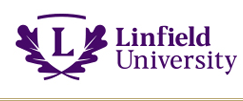A Comparison of Middle School Mathematics Education in the United States, Japan, China and Malaysia
Faculty Sponsor
Nancy Drickey
Location
Jereld R. Nicholson Library
Date
5-11-2012 3:00 PM
End Date
5-11-2012 4:30 PM
Subject Area
Education
Description
Educators in the United States have often emphasized the development of students’ mathematical and scientific skills. Over the years, many studies have been conducted to research the different aspects of teaching mathematics and science. Inspired by the 2003 Horizon Research study, Looking Inside the Classroom: A Study of K-12 Mathematics and Science Education in the United States, pre-existing teacher interview questions were adapted and the Observation and Analytic Protocol was used for gathering data in middle schools in Asia (Horizon Research, 2003). Results from the 2009 Programme for International Student Assessment (P.I.S.A.) show that four out of the top five participating countries are countries in Asia; hence, this study proposes to examine the current trends and instructional methods used in middle school classrooms in Japan, China, and Malaysia through observations and teacher interviews. Middle school mathematics observations and teacher interviews were conducted from 2009 – 2011 in 12 classrooms in Japan, 4 in China, and 6 in Malaysia. The results were compared to the study conducted in the U.S. from 2000-2002, which included 66 middle school mathematics classroom observations and teacher interviews. Capsule ratings were determined based on observation and interview data plus thirteen traits of effective instruction extracted from the protocols. The results show that the distinguishing factors of higher capsule ratings in Asian middle schools are attributed to the rigor of mathematics content, engaging lessons, effective classroom management, the use of technology, and the presence of collaboration between teachers and students.
Recommended Citation
Foo, Maylyn, "A Comparison of Middle School Mathematics Education in the United States, Japan, China and Malaysia" (2012). Humanities and Creative Projects. Event. Submission 21.
https://digitalcommons.linfield.edu/studsymp_cr/2012/all/21
A Comparison of Middle School Mathematics Education in the United States, Japan, China and Malaysia
Jereld R. Nicholson Library
Educators in the United States have often emphasized the development of students’ mathematical and scientific skills. Over the years, many studies have been conducted to research the different aspects of teaching mathematics and science. Inspired by the 2003 Horizon Research study, Looking Inside the Classroom: A Study of K-12 Mathematics and Science Education in the United States, pre-existing teacher interview questions were adapted and the Observation and Analytic Protocol was used for gathering data in middle schools in Asia (Horizon Research, 2003). Results from the 2009 Programme for International Student Assessment (P.I.S.A.) show that four out of the top five participating countries are countries in Asia; hence, this study proposes to examine the current trends and instructional methods used in middle school classrooms in Japan, China, and Malaysia through observations and teacher interviews. Middle school mathematics observations and teacher interviews were conducted from 2009 – 2011 in 12 classrooms in Japan, 4 in China, and 6 in Malaysia. The results were compared to the study conducted in the U.S. from 2000-2002, which included 66 middle school mathematics classroom observations and teacher interviews. Capsule ratings were determined based on observation and interview data plus thirteen traits of effective instruction extracted from the protocols. The results show that the distinguishing factors of higher capsule ratings in Asian middle schools are attributed to the rigor of mathematics content, engaging lessons, effective classroom management, the use of technology, and the presence of collaboration between teachers and students.

